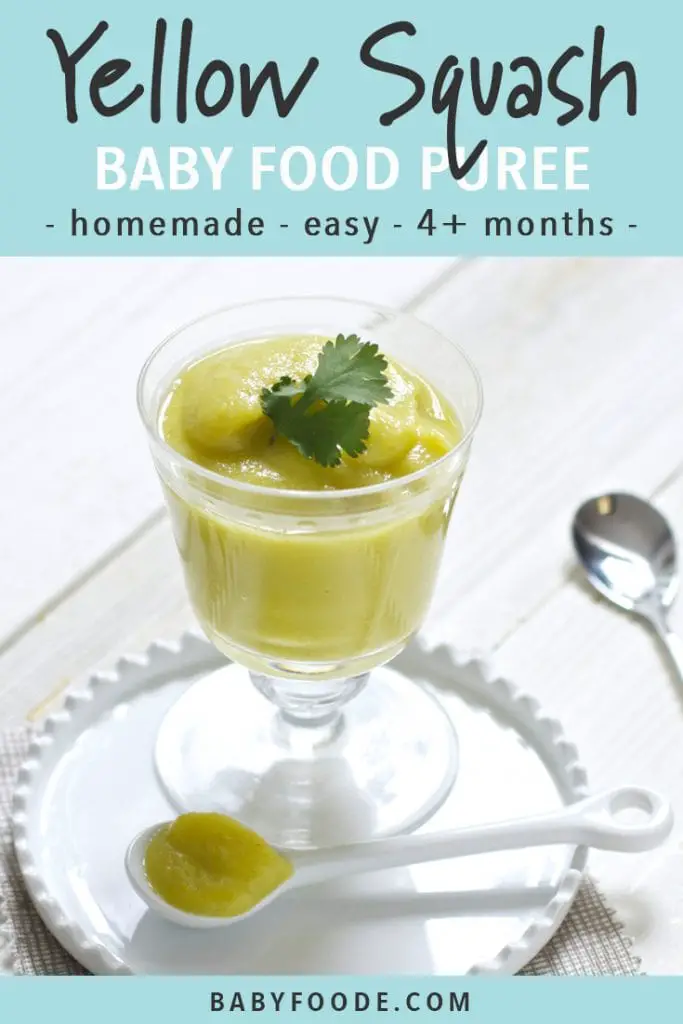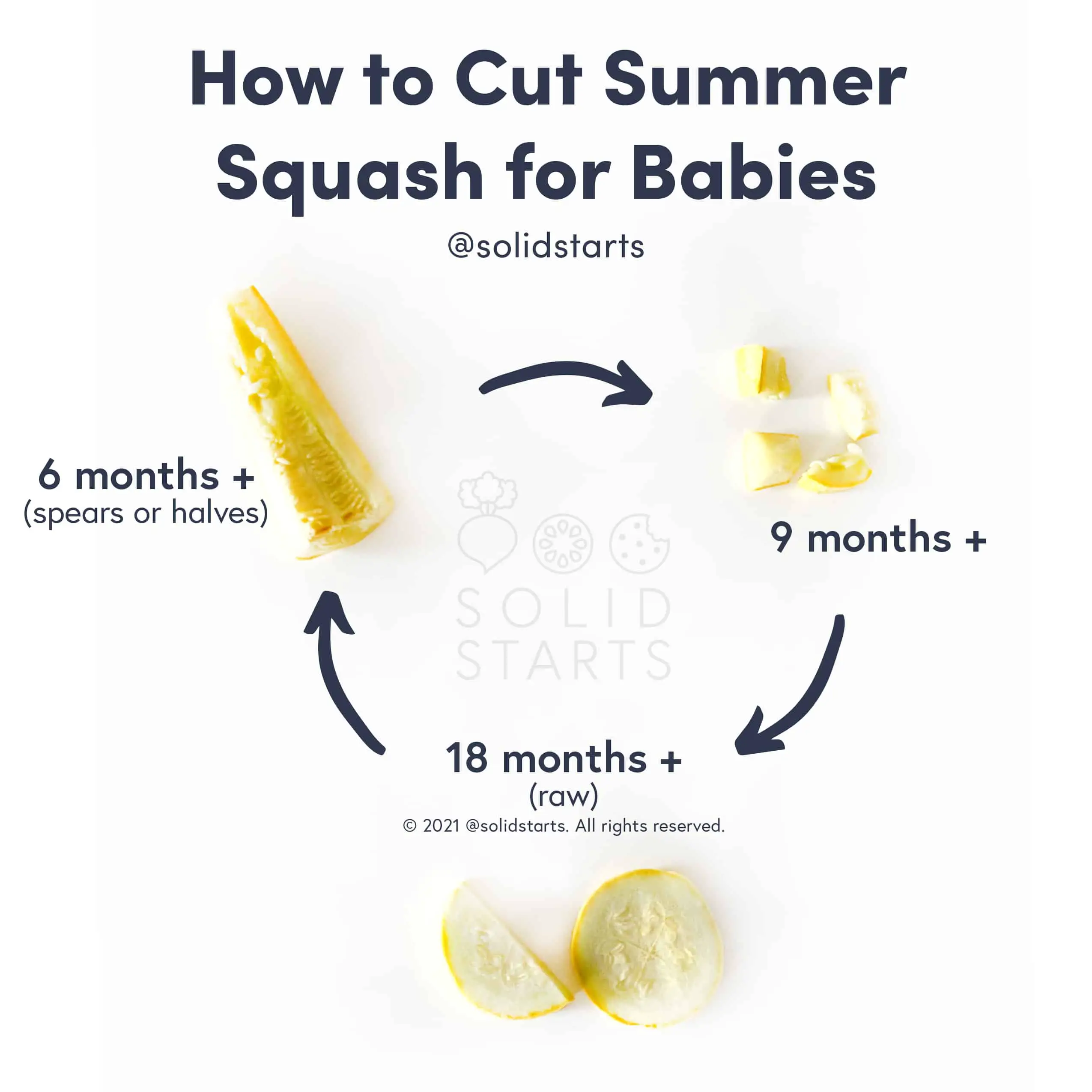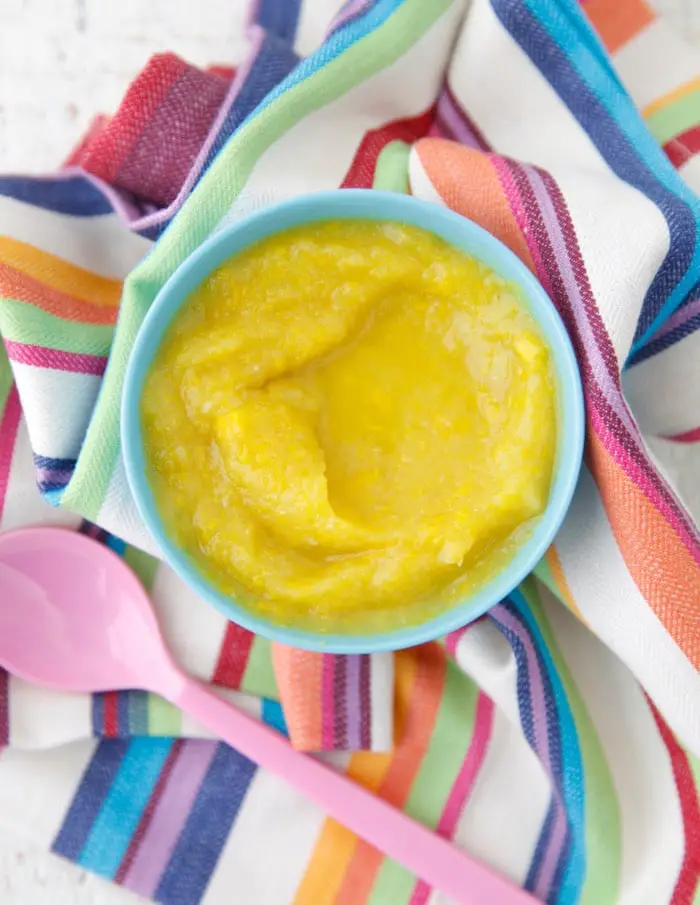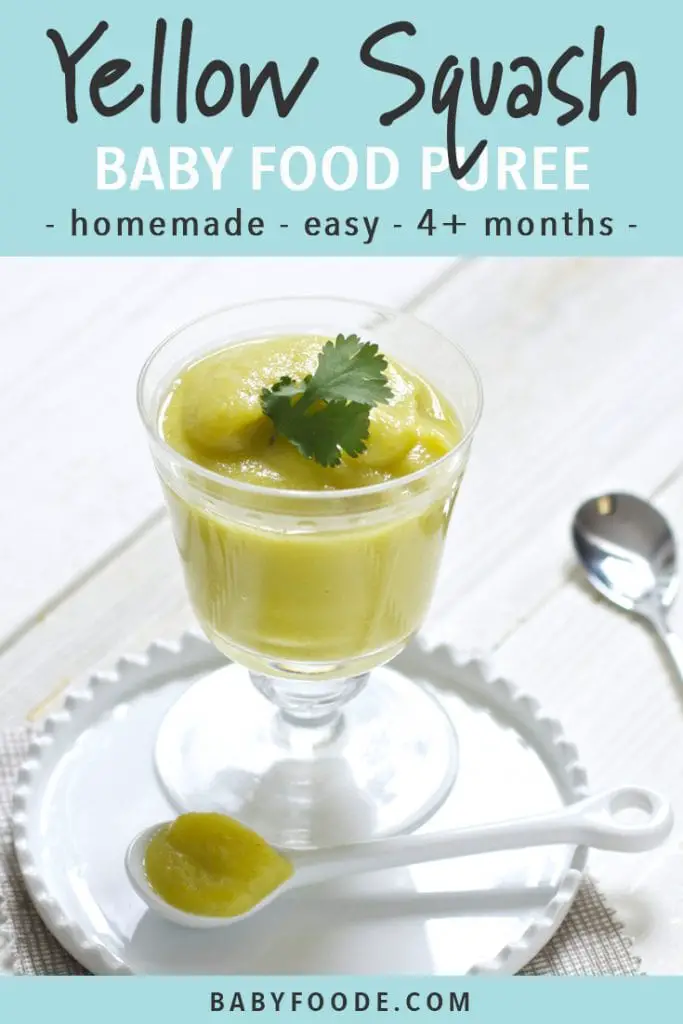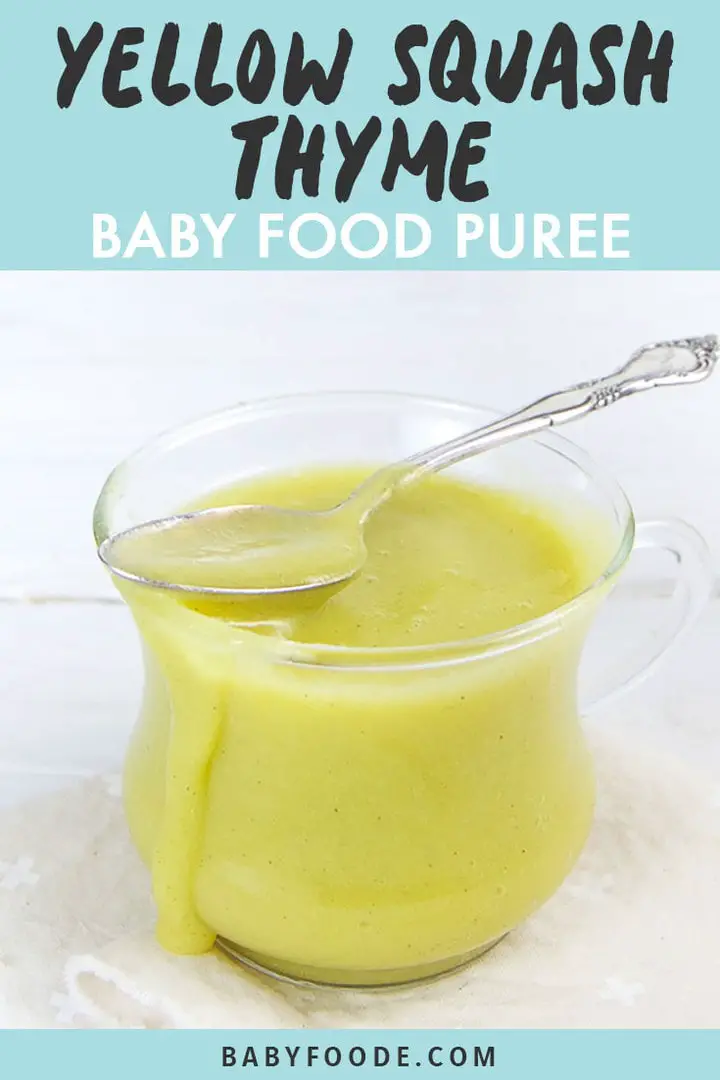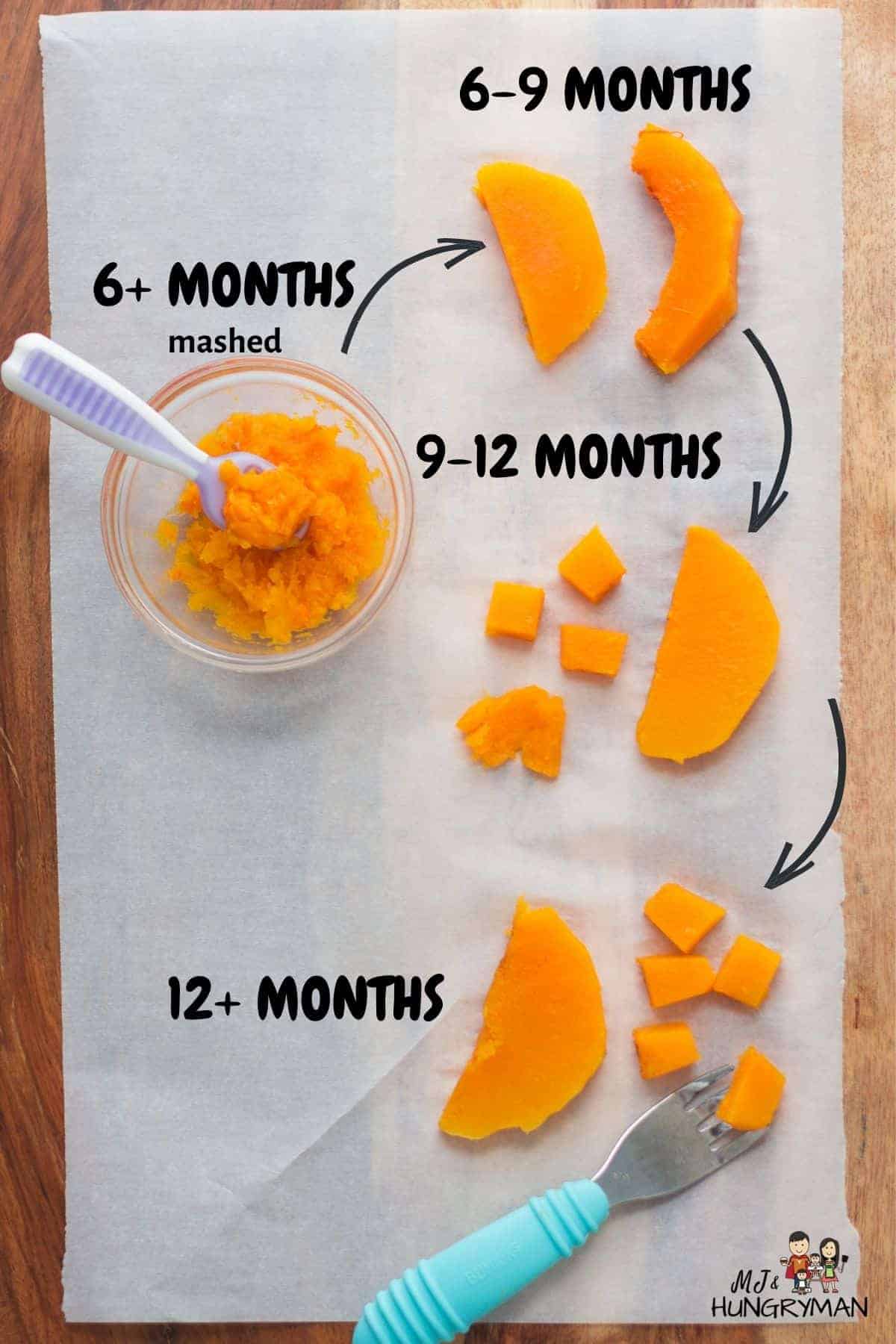So, you’ve found yourself with some yellow squash and a little one who is ready to start solid foods. Well, you’re in luck because making your own homemade yellow squash baby food is easier than you might think! In this article, we’ll show you a simple step-by-step process that will have your little munchkin enjoying the delicious flavors and nutritious benefits of yellow squash in no time. From selecting the perfect squash to preparing and storing the puree, we’ve got you covered. So, grab your apron and let’s get cooking!
Choosing and Preparing Yellow Squash
Selecting the right yellow squash
When choosing yellow squash for baby food, it’s important to select ones that are firm, brightly colored, and free from any blemishes or bruises. Look for smaller squash, as they tend to have a sweeter flavor. Avoid any yellow squash that feels soft or has wrinkled skin, as these are signs of spoilage.
Washing and cleaning the yellow squash
Before preparing the yellow squash, it’s crucial to wash them thoroughly to remove any dirt or pesticides. Start by rinsing the squash under cold water, using a gentle brush to scrub away any visible dirt. This step ensures that your baby’s food is clean and safe to eat.
Peeling or not peeling the yellow squash
When it comes to peeling yellow squash for baby food, it ultimately depends on personal preference. The skin of yellow squash is edible and contains essential nutrients. However, if you prefer a smoother texture or if your baby has trouble digesting the skin, you can peel it using a vegetable peeler. Remember to wash the squash before peeling.
Cutting the yellow squash into small pieces
To prepare the yellow squash for cooking, you’ll want to cut it into small, manageable pieces. Start by removing the ends of the squash and then slice it into rounds or half-moons. This allows for even cooking and makes it easier to blend or mash the cooked squash later on.
Steaming or Boiling the Yellow Squash
Steaming yellow squash
Steaming is a popular method of cooking yellow squash for baby food because it helps retain its nutrients and natural flavors. To steam the squash, place the cut pieces in a steamer basket over boiling water. Cover the pot and let the squash cook for about 10-15 minutes or until it becomes soft and tender.
Boiling yellow squash
If you prefer a quicker cooking method, boiling yellow squash is another option. Simply place the cut pieces of squash in a pot of boiling water and cook for about 8-10 minutes, or until the squash is easily pierced with a fork. Be sure not to overcook the squash, as it can become mushy and lose some of its nutrients.
Determining the cooking time
The cooking time for yellow squash can vary depending on the size and thickness of the pieces. It’s essential to check the squash periodically while cooking to ensure it doesn’t become too soft or mushy. A fork should easily pierce through the squash, but it should still retain some texture.
Checking squash for tenderness
To determine if the yellow squash is cooked to the right tenderness, carefully remove a piece from the steamer or boiling water and allow it to cool slightly. Gently press a fork or your finger against the piece of squash. If it feels soft and easily mashes, it’s ready. If it still feels firm or crunchy, it needs a bit more cooking time.
Blending the Cooked Yellow Squash
Allowing the squash to cool
Once the yellow squash is cooked to the desired tenderness, it’s important to let it cool before blending. This prevents any steam or heat from damaging the blender and ensures the safety of your baby when consuming the food. Place the cooked squash in a bowl and let it cool for a few minutes.
Transferring the squash to a blender
After the cooked yellow squash has cooled down, transfer it to a blender or food processor. Make sure the blender is clean and dry, as any residue can affect the taste or texture of the baby food. Use a spoon or spatula to scoop all the pieces of squash into the blender.
Adding liquid for desired consistency
To achieve the desired consistency for your baby’s food, you may need to add some liquid to the blended yellow squash. Breast milk, formula, or water can be used to thin out the mixture. Start by adding a small amount, about one tablespoon at a time, and blend until you reach the desired texture. Remember that you can always add more liquid but cannot remove it once it’s blended in.
Blending until smooth and lump-free
Once the yellow squash and liquid are in the blender, secure the lid tightly and blend until the mixture is smooth and lump-free. It’s important to blend thoroughly to ensure the baby food is easy for your little one to consume and digest. Stop the blender periodically to scrape down the sides and make sure all the squash is incorporated.
Serving Suggestions
Introducing yellow squash to your baby
When introducing yellow squash to your baby, start with small amounts to gauge their reaction and tolerance. Begin with a teaspoon of the prepared yellow squash baby food and gradually increase the portion size over a few days. Watch for any signs of allergies or digestive issues, such as rashes, vomiting, or diarrhea.
Mixing yellow squash with other foods
Yellow squash pairs well with a variety of other baby-friendly foods. You can mix it with pureed fruits like apples, pears, or bananas to add sweetness and variety. Additionally, combining yellow squash with other vegetables like carrots, peas, or sweet potatoes provides a nutritious blend of flavors and textures.
Storing leftover yellow squash baby food
If you have leftover yellow squash baby food, it’s crucial to store it properly to maintain freshness and prevent spoilage. Place the cooled baby food into small airtight containers or ice cube trays for easy portioning. Seal the containers tightly and store them in the refrigerator for up to three days, or in the freezer for up to three months.
Reheating the refrigerated or frozen yellow squash
When it’s time to serve the refrigerated or frozen yellow squash baby food, there are a few safe reheating methods. To thaw frozen baby food, transfer a portion to the refrigerator and let it defrost overnight. For refrigerated baby food, gently warm it in a microwave-safe dish or on the stovetop, stirring occasionally to ensure even heating. Always test the temperature before serving to your baby.
Adding Variety to Yellow Squash Baby Food
Mixing yellow squash with different fruits
One of the best ways to add variety to yellow squash baby food is by combining it with different fruits. Try blending it with pureed mangoes for a tropical twist, or mix it with mashed blueberries for added antioxidants. Experiment with different flavor combinations to expose your baby to a range of tastes.
Incorporating yellow squash into veggie blends
To further enrich your baby’s diet, incorporate yellow squash into veggie blends. Combine it with other vegetables such as spinach, kale, or peas to create a vibrant and nutrient-packed baby food. These blends provide a variety of vitamins and minerals essential for your baby’s growth and development.
Combining yellow squash with grains
As your baby grows older and starts exploring more textured foods, you can introduce yellow squash blended with cooked grains. Mix it with pureed quinoa, rice, or oats for added fiber and a heartier meal. These grain combinations provide essential carbohydrates and can help keep your baby feeling full and satisfied.
Experimenting with herbs and spices
Once your baby has successfully tried yellow squash in its pure form, you can begin experimenting with the addition of herbs and spices. Mild options like cinnamon, ginger, or thyme can enhance the flavor profile and introduce different sensory experiences. Start with a small pinch of the chosen herb or spice and gradually increase the amount if your baby tolerates and enjoys it.
Nutritional Benefits of Yellow Squash
High in vitamins and minerals
Yellow squash is a nutritious vegetable that packs a punch when it comes to vitamins and minerals. It is a good source of vitamin A, vitamin C, and potassium, which are essential for healthy growth and development. These nutrients support your baby’s immune system, vision, and overall well-being.
Rich in dietary fiber
Including yellow squash in your baby’s diet helps promote healthy digestion and prevent constipation. Yellow squash is rich in dietary fiber, which adds bulk to the stool and helps regulate bowel movements. This can be especially beneficial as your baby transitions to solid foods and begins to explore new textures.
Provides essential antioxidants
Yellow squash contains natural antioxidants like beta-carotene and vitamin C, which help protect your baby’s cells from damage caused by harmful molecules called free radicals. Antioxidants play a crucial role in promoting a strong immune system and reducing the risk of chronic diseases later in life.
Contributes to healthy digestion
With its high water content and dietary fiber, yellow squash aids in maintaining a healthy digestive system for your baby. It helps regulate bowel movements, prevents constipation, and supports overall gut health. Including yellow squash in your baby’s diet can help promote regularity and prevent digestive discomfort.
Possible Allergies and Precautions
Monitoring for signs of allergies
When introducing yellow squash to your baby, it’s important to monitor them closely for any signs of allergies or adverse reactions. Watch for symptoms such as rashes, hives, swelling, vomiting, or difficulty breathing after consuming yellow squash. If you notice any of these symptoms, discontinue feeding and consult with a pediatrician.
Consulting with a pediatrician
If you have concerns about introducing yellow squash to your baby or if your baby has a known food allergy, it’s best to consult with a pediatrician before making any dietary changes. They can provide personalized guidance and ensure that introducing yellow squash aligns with your baby’s individual nutritional needs.
Avoiding seasoning or additives
When preparing yellow squash baby food, it’s important to avoid using any seasoning or additives. Salt, sugar, and spices can be too harsh for your baby’s delicate digestive system and may increase the risk of allergies or irritation. Stick to plain yellow squash or blend it with other baby-friendly fruits or vegetables.
Using organic yellow squash
Choosing organic yellow squash can be a wise option when making baby food. Organic produce is grown without synthetic pesticides, herbicides, or genetically modified organisms (GMOs). By opting for organic yellow squash, you can reduce your baby’s exposure to potentially harmful chemicals and ensure a safer, more natural food source.
Tips and Tricks
Choosing ripe and fresh yellow squash
When purchasing yellow squash, look for ones that are firm, with smooth skin and a vibrant yellow color. Avoid squash with soft spots, wrinkles, or signs of mold. Additionally, selecting smaller yellow squash ensures a sweeter flavor and a more tender texture.
Freezing yellow squash baby food
If you have a surplus of yellow squash baby food or want to prepare larger batches in advance, freezing is a convenient option. Once the baby food has cooled, transfer it to ice cube trays and freeze until solid. Once frozen, transfer the cubes to a freezer-safe bag or container for future use. Remember to label and date the containers for easy identification.
Labeling and dating frozen batches
To maintain freshness and avoid confusion, it’s essential to label and date your frozen batches of yellow squash baby food. Use a permanent marker to write the date of preparation and the contents on the storage containers. This ensures that you use the oldest food first and helps you keep track of the duration of storage.
Using suitable storage containers
When storing yellow squash baby food, opt for airtight containers specifically designed for storing baby food. Glass or BPA-free plastic containers are ideal choices. Make sure the containers are clean, dry, and seal tightly to prevent freezer burn or contamination.
Transitioning to Chunkier Textures
Gradually increasing texture
As your baby becomes more accustomed to eating pureed yellow squash, you can begin to gradually increase the texture. Introduce slightly mashed yellow squash by using a fork or potato masher to break up the squash into small pieces. This helps your baby develop their chewing skills and prepares them for more textured foods.
Introducing mashed or diced yellow squash
Once your baby has successfully transitioned to slightly mashed yellow squash, you can continue to increase the texture by introducing finely mashed or diced pieces. This encourages your baby to practice chewing and helps them become accustomed to different textures and tastes.
Slowly introducing finger foods
As your baby becomes more comfortable with chewing and swallowing different textures, you can begin to introduce soft finger foods alongside the mashed or diced yellow squash. Cooked and softened peas, small pieces of cooked carrot, or small chunks of avocado make excellent options to accompany the yellow squash.
Encouraging self-feeding
As your baby progresses in their journey of exploring different textures, it’s beneficial to encourage self-feeding. Allow your baby to practice picking up small pieces of yellow squash or other finger foods and feeding themselves. This fosters their independence and hand-eye coordination while fostering a positive relationship with food.
Benefits of Homemade Yellow Squash Baby Food
Controlling ingredients and quality
One of the significant advantages of making homemade yellow squash baby food is having control over the ingredients and quality. You can choose the freshest produce and ensure that no additives or preservatives are present. This allows you to provide your baby with a nutritious and wholesome meal.
Saving money compared to store-bought options
Making homemade yellow squash baby food can be a cost-effective choice in comparison to purchasing pre-packaged options. Buying fresh yellow squash in bulk and preparing it at home is often more affordable. Additionally, by freezing batched portions, you can save money in the long run.
Customizing flavors and combinations
When making yellow squash baby food at home, you have the freedom to customize flavors and combinations to suit your baby’s taste preferences. You can experiment with different fruits, vegetables, and herbs to create unique blends. This introduces your baby to a wider variety of flavors and helps develop their palate.
Fostering a healthy relationship with nutritious food
By preparing homemade yellow squash baby food, you are teaching your baby from an early age about the importance of nutritious food and fostering a positive relationship with it. Involving your baby in the process, such as watching you prepare the food or allowing them to feed themselves, can cultivate a lifelong appreciation for healthy eating habits.
In conclusion, making yellow squash baby food at home is a wonderful way to introduce your little one to nutritious and delicious flavors. By selecting the right squash, properly preparing and cooking it, and gradually introducing texture, you can provide your baby with a wholesome and enjoyable meal. Be sure to consult with a pediatrician, monitor for signs of allergies, and always prioritize your baby’s safety and well-being. So go ahead, get creative, and have fun exploring the world of yellow squash baby food!
